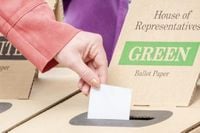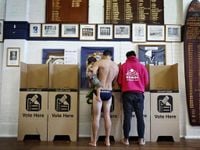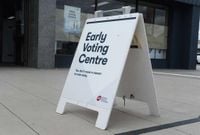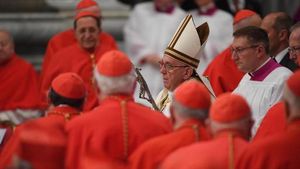As the countdown to the 2025 federal election in Australia begins, early voting is set to start on April 22, 2025, just after the Easter holiday. This year, Australians will have the opportunity to cast their votes at numerous early voting centres across the country, making it easier for citizens to participate in the democratic process.
Under Australian law, pre-polling cannot begin more than 12 days before election day, which is scheduled for Saturday, May 3, 2025. With thousands of early voting centres opening their doors, the Australian Electoral Commission (AEC) is urging voters to familiarize themselves with their voting options.
Eligible voters can take advantage of early voting if they meet certain criteria. These include being away from their electorate, located more than 8 kilometers from a polling centre, unable to leave work, seriously ill, about to give birth, having religious reasons, being in prison, or fearing for their safety. Additionally, silent electors, whose addresses cannot be disclosed, are also eligible for early voting.
In Sydney, for example, residents in postcode 2000 will find 12 early voting locations within a short distance. Most centres will be open from 8:30 AM to 5:30 PM, operating like standard polling booths.
For those opting for postal voting, applications must be submitted by 6 PM on Wednesday, April 30, 2025. Voters can fill out their postal vote packs as soon as they receive them in the mail. It's important to note that postal votes must be completed by election day and received by the AEC no later than 13 days after polling day to be considered valid.
The AEC also offers a telephone voting service for Australians who are blind or have low vision. This service will begin on April 22, 2025, and is designed to ensure that all eligible voters can participate in the election, regardless of their circumstances. Interestingly, Australians stationed in Antarctica also utilize this telephone voting method.
As part of the preparations for the election, hundreds of early voting centres around Australia are setting up cardboard cubicles and other necessary infrastructure. However, voters should be aware that all early voting centres will be closed on Anzac Day, which falls on Friday, April 25, 2025. This closure is a mark of respect for those who served in the military.
In addition to stationary voting centres, the AEC is deploying 70 mobile teams to reach remote areas. These teams, using light aircraft, 4WD vehicles, helicopters, and sometimes boats, will establish temporary voting sites in some of Australia's most isolated communities. This initiative marks the largest remote voting service ever provided at a federal election, with nearly 500 different locations being visited as teams travel a combined total of around 200,000 kilometers.
For voters who are unsure about their registration status or want to check their electoral roll details, the AEC provides a simple online tool. As voting is compulsory in Australia, ensuring that you are registered is essential. The rolls have now closed, so it's crucial for voters to have checked their status prior to this deadline.
On election day, voters will receive two pieces of paper at the ballot box. The smaller paper is for the House of Representatives, which uses preferential voting. Voters must number every box in order of preference for their vote to be valid. The larger paper is for the Senate, which consists of 76 members, with 12 from each state and two from each territory. Voters can choose to vote above the line for parties or groups by numbering at least six boxes or vote below the line for individual candidates, requiring at least 12 boxes to be numbered.
As the election approaches, the political landscape is shaping up with Labor holding 78 of the 151 seats in the House of Representatives, while the Coalition holds 54 seats. The Greens have four seats, and there are 13 independents, along with one seat each for the Centre Alliance party and Katter’s Australia party. The lower house will return to 150 members for this election, with Western Australia gaining one seat while New South Wales and Victoria will each lose one. A total of 76 seats will be needed for a majority government.
In the Senate, the Coalition currently holds 30 seats, Labor 25, and the Greens 11, with the remaining 10 seats held by independents and minor parties. The upcoming election will be crucial, as no party holds a majority in the Senate, and the outcome could lead to intricate negotiations if the lower house does not produce a clear winner.
Polls indicate that while the Coalition had a steady lead at the beginning of the year, Labor has since narrowed the gap and may be in a position to form a minority government. However, the dynamics of the election remain fluid, and results can vary significantly across different regions of the country.
Voters are encouraged to stay informed about their voting options and to plan their votes accordingly. The AEC is distributing an official guide to households that outlines various voting methods, what to expect at polling places, and answers to frequently asked questions. This guide will also be available digitally in 34 different languages, with accessible versions including braille, e-text, and audio files to cater to all Australians.
As we approach the election, it is of utmost importance for citizens to engage with the democratic process and ensure their voices are heard. With early voting starting soon, now is the time to prepare and make a plan to participate in shaping the future of Australia.










